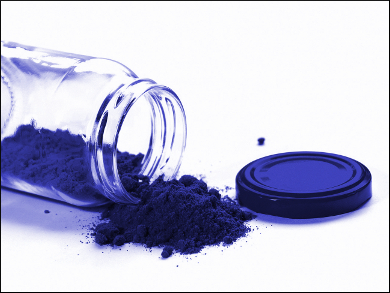Bismuth sulfide (Bi2S3) nanoparticles are promising for applications in bioimaging, in part due to their nontoxicity. They can, e.g., be used as contrast agents in computed tomography (CT scans). However, they are difficult to synthesize and air-sensitive.
Audrey Moores, McGill University, Montreal, Canada, and colleagues have developed a simple synthesis of monodisperse Bi2S3 nanoparticles (2–8 nm diameter) which can be suspended in either organic or aqueous media. The team used milling to mechanically activate a mixture of Bi(NO3)3·5 H2O as a bismuth source and L-cysteine as a sulfur source in the presence of different capping agents. After milling, the mixture was aged in air for 12–24 hours.
When oleyamine (OA) is used as a capping agent, the resulting nanoparticles are suspendable in organic solvents. Miling in the presence of sodium 6-aminohexanoate (AHA), in contrast, gives water-suspendable nanoparticles. The team also prepared biocompatible poly(ethylene glycol) (PEG)-functionalized nanoparticles for pharmaceutical applications. According to the researchers, the solvent-free approach could be useful for the synthesis of other metal chalcogenide nanoparticles in sizes that cannot be accessed with conventional techniques.
- Mechanically Activated Solvent-Free Assembly of Ultrasmall Bi2S3 Nanoparticles: A Novel, Simple, and Sustainable Means To Access Chalcogenide Nanoparticles,
Michael Y. Malca, Huizhi Bao, Thomas Bastaille, Nadim K. Saadé, Joseph M. Kinsella, Tomislav Friščić, Audrey Moores,
Chem. Mater. 2017.
DOI: 10.1021/acs.chemmater.7b02134


